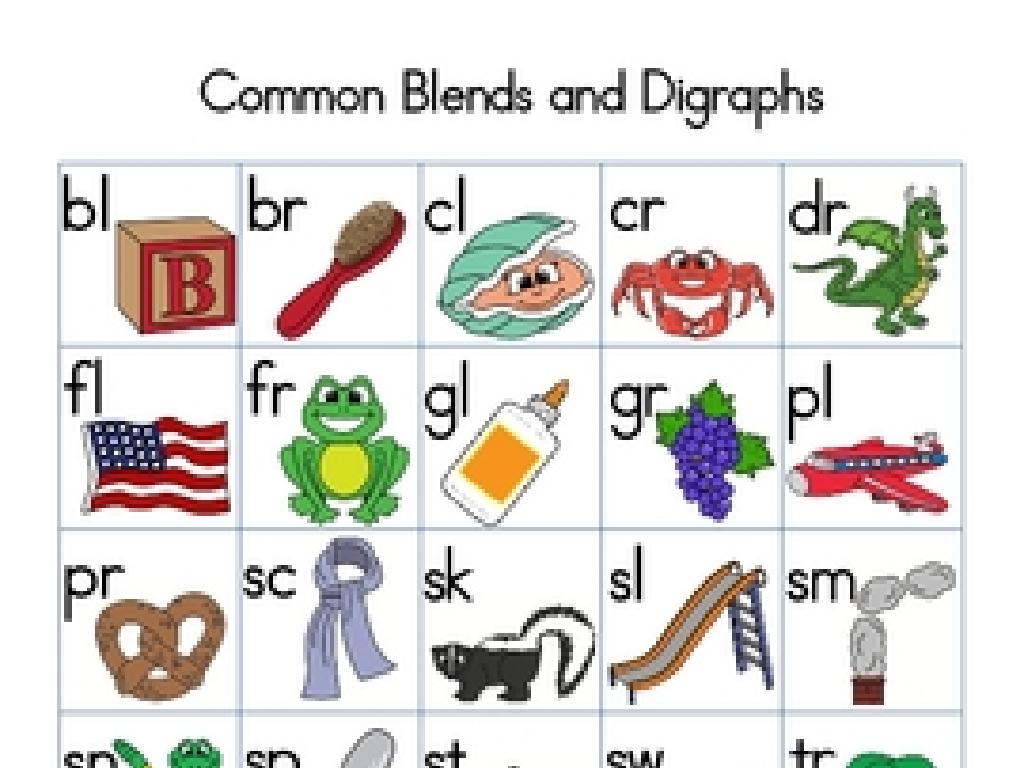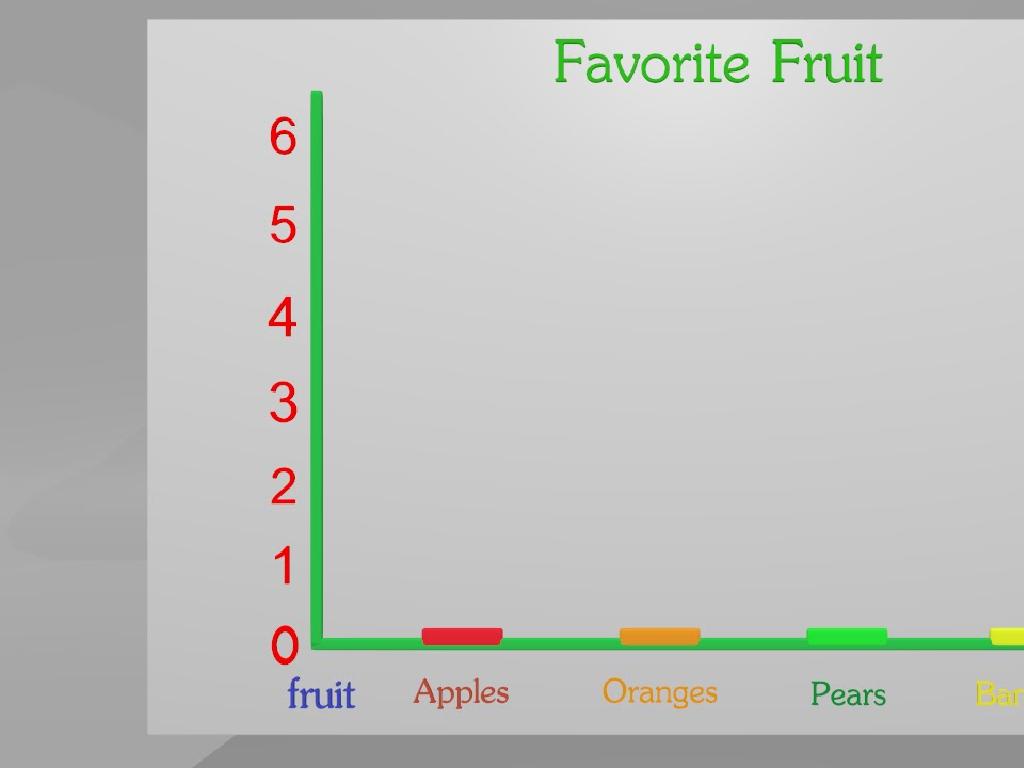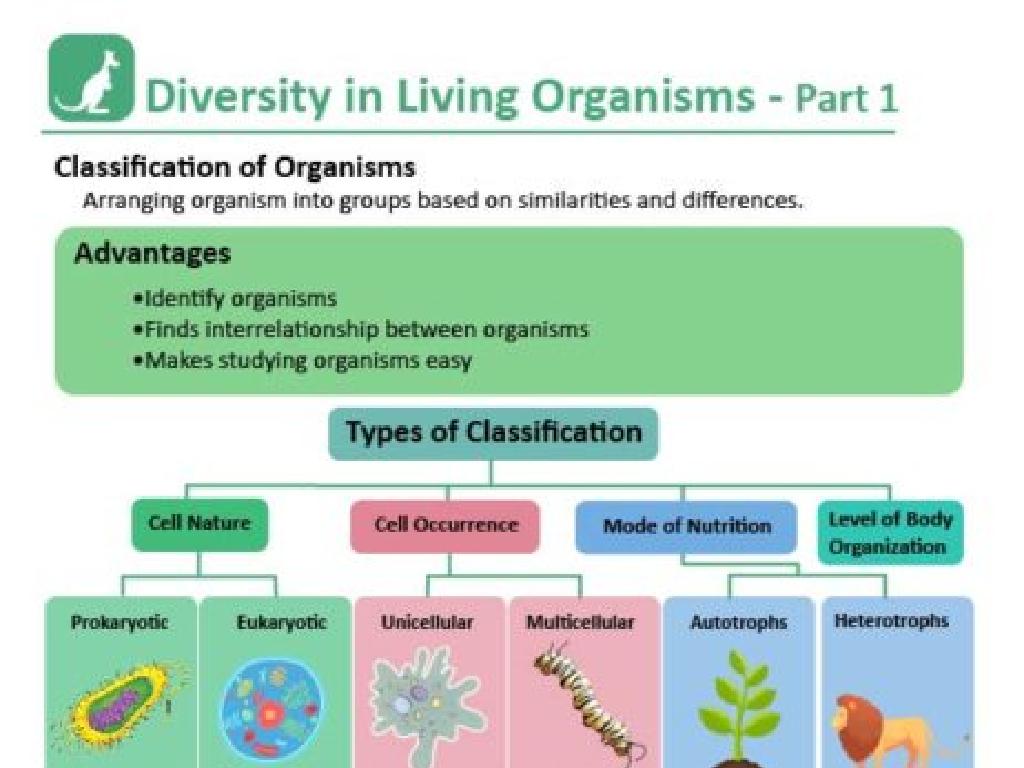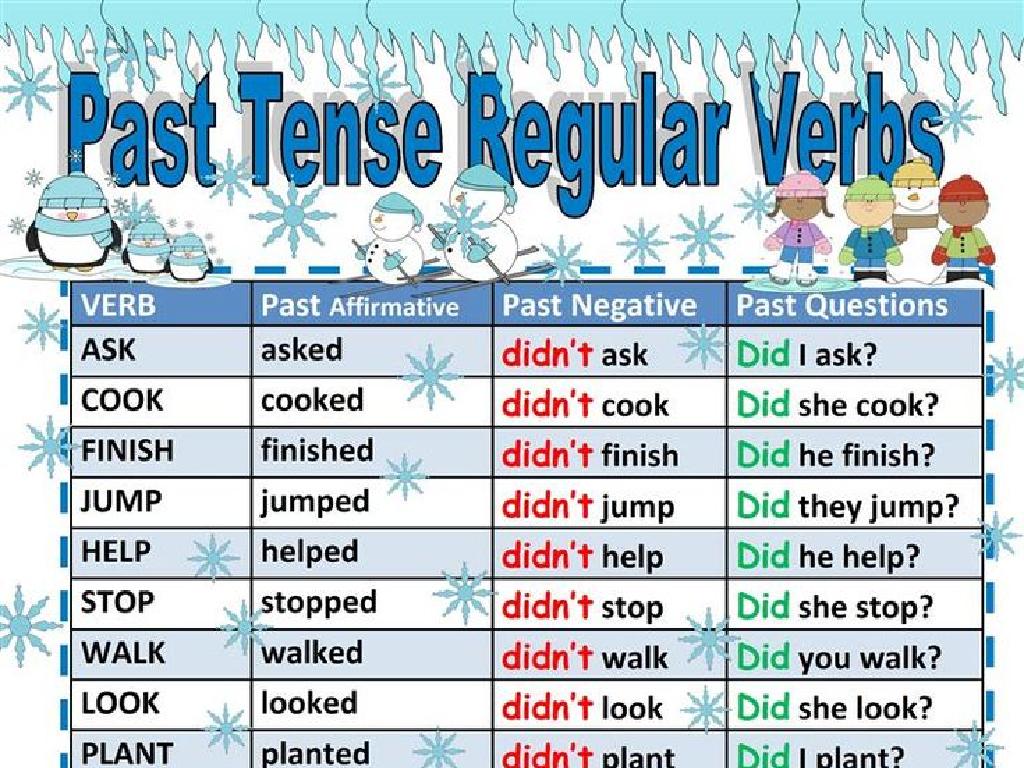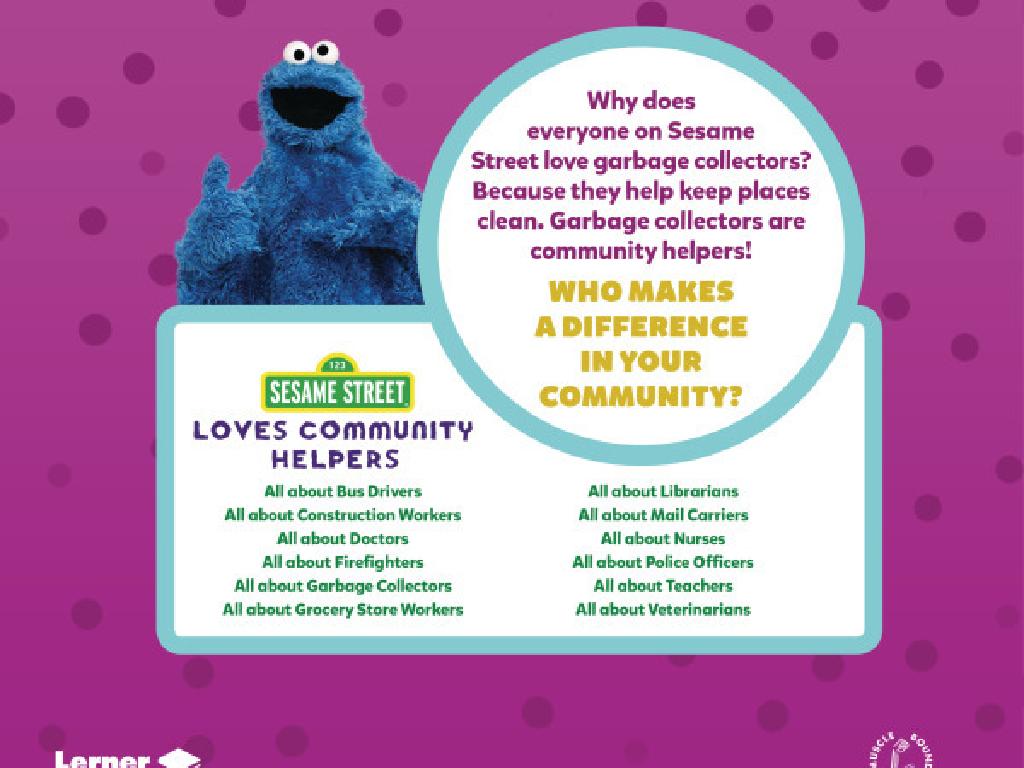Addition And Subtraction Word Problems - Up To 1,000
Subject: Math
Grade: Second grade
Topic: Mixed Operations: Three Digits
Please LOG IN to download the presentation. Access is available to registered users only.
View More Content
Math Detectives: Addition & Subtraction Adventures
– Embrace your inner math detective
– Solve number mysteries up to 1,000
– Use clues to find answers to problems
– Master addition and subtraction
– Learn strategies for big number equations
– Gear up for a math adventure
– Get ready for fun challenges in class
|
In today’s class, we’re transforming students into math detectives, where they will tackle word problems involving addition and subtraction up to 1,000. Encourage them to look for ‘clues’ in the problems, such as keywords that indicate which operation to use. Teach them strategies for handling larger numbers, like breaking them into hundreds, tens, and ones or using number lines. Prepare a set of diverse and engaging word problems for them to solve, and consider pairing students for collaborative problem-solving. This approach aims to make math an adventure, fostering a love for learning and confidence in their mathematical abilities.
Understanding Word Problems
– What are word problems?
– Stories that require math to solve.
– Importance in real life
– They help us apply math to everyday situations.
– Tips for solving problems
– Read the problem, find clues, choose addition or subtraction.
– Practice with examples
– Example: If you have 3 apples and get 2 more, how many do you have now?
|
This slide introduces students to the concept of word problems in mathematics, emphasizing their relevance and application in real-life situations. Word problems are like puzzles or stories where math is used to find a solution. They are crucial because they help students understand how math is not just abstract numbers but a tool to solve everyday problems. The tips provided aim to guide students through the process of solving word problems by reading carefully, identifying key information, and determining the correct operation to use. The slide encourages students to practice with examples and to understand that math is a practical skill that can be fun and engaging.
Combining Numbers with Addition
– Addition means joining together
– When we add, we combine two amounts into one total
– Example with apples
– If you start with 3 apples and get 2 more, you now have 5 apples
– Using a number line to add
– A number line helps us see the addition steps visually
|
This slide introduces the concept of addition as a way of combining numbers to find a total. Start by explaining that addition is like putting things together to see how much you have in all. Use the apple example to make it relatable for second graders, showing that if you start with a certain number of items and get more, you can add to find the total. Introduce the number line as a tool to visually represent addition by marking the starting number and counting up to the total. Encourage students to draw their own number lines and use them to solve addition problems. This will help them understand the concept of addition and how to apply it to word problems.
Subtraction: Taking Away
– Subtraction means taking away
– Example with oranges
– If you start with 5 oranges and eat 2, you have 3 left
– Using a number line
– A number line shows the count down from 5 to 3
– Practice subtraction problems
– Solve problems: 800 – 250, 670 – 320
|
This slide introduces the concept of subtraction as ‘taking away’ to second-grade students. Start by explaining subtraction in simple terms they can understand, such as taking away items from a group. Use the example of oranges to illustrate this point in a tangible way. Show how a number line can be a helpful tool for visualizing subtraction by counting backwards. Finally, provide practice problems with three-digit numbers, ensuring they align with the ‘up to 1,000’ range. Encourage students to use the number line method for these problems and to check their work by adding the difference to the smaller number to see if it equals the larger number.
Solving Word Problems Together
– Read a word problem aloud
– Find clues for addition or subtraction
– Look for words like ‘total’ for addition, ‘left’ for subtraction
– Solve the problem step by step
– Use a number line or draw pictures to help
– Discuss our answers as a class
|
This slide is aimed at engaging the whole class in a collaborative problem-solving activity. Start by reading a word problem aloud to the class, ensuring that everyone understands the context. Next, guide the students to look for keywords or phrases within the problem that indicate whether to add or subtract. For example, ‘in all’ or ‘altogether’ might suggest addition, while ‘fewer than’ or ‘remain’ might suggest subtraction. Work through the problem together, encouraging students to visualize the problem using a number line or drawings, and to think aloud as they calculate the answer. Finally, discuss the solution as a class, allowing students to explain their reasoning and understand different approaches to the same problem. This activity will help reinforce their understanding of addition and subtraction within 1,000 and improve their ability to tackle word problems.
Practice Time: Solving Word Problems
– Try solving problems on your own
– Look for clues within the story
– Words like ‘altogether’ or ‘left’ can hint at addition or subtraction
– Collaborate with a classmate
– Two heads are better than one – help each other out!
– Discuss and compare answers
– Explaining your thinking can help you learn
|
This slide is designed to encourage active participation and collaboration among students as they practice addition and subtraction word problems up to 1,000. Provide a variety of word problems for the students to solve, ensuring that the problems are relatable and appropriate for their level. Encourage them to identify keywords that indicate whether to add or subtract. Pair students up to promote teamwork and allow them to discuss their problem-solving strategies. As they work together, they can learn from each other’s approaches and mistakes. After the activity, facilitate a discussion where pairs can share their answers and the clues that helped them solve the problems. This will reinforce their understanding and help them recognize patterns in word problems.
Solving Word Problems with Addition
– Understand the problem
– Find the clues
– Jenny starts with 123 stickers, buys 78 more
– Show work with pictures
– Draw Jenny’s 123 stickers, then add 78 more
– Add numbers together
– 123 stickers + 78 stickers = ?
|
This slide introduces students to solving addition word problems up to 1,000. Start by reading the problem aloud and understanding what is being asked. Highlight the importance of identifying key information or ‘clues’ in the problem, such as the starting number of stickers and the amount added. Encourage students to visualize the problem by drawing pictures representing the stickers, which can help them understand the concept of addition. Finally, guide them through the process of adding the two numbers together to find the total number of stickers. Reinforce the skill by solving the problem as a class and then allowing students to try similar problems on their own or in small groups.
Class Activity: Math Detective Game
– Transform into Math Detectives
– Solve mystery word problems
– Problems are posted around the room
– Collect clues from each problem
– Each problem solved gives a clue
– Unravel the final riddle
– Use the clues to solve a fun riddle
|
This interactive class activity is designed to engage second-grade students in solving addition and subtraction word problems with sums and differences up to 1,000. As Math Detectives, students will move around the classroom to different ‘crime scenes’ where word problems are posted. Each solved problem will yield a clue. Once all problems are solved, students will use their collected clues to answer a final riddle. For the teacher: Prepare diverse word problems of varying difficulty and ensure they are clear and accessible. Create a compelling riddle that can be solved with the clues. Consider pairing students to encourage collaboration. Have backup activities for fast finishers, such as creating their own mystery word problems for peers to solve.
Conclusion: Becoming Word Problem Experts
– Recap: addition and subtraction
We learned to solve problems by adding and subtracting numbers up to 1,000.
– Real-life application of skills
Use these skills to manage money, plan events, or measure ingredients in cooking.
– Celebrating our problem-solving
– Keep practicing at home!
Try solving problems in everyday life to become even better!
|
In this concluding slide, we review the key concepts of addition and subtraction within 1,000 that the students have learned. Emphasize the importance of these skills in various real-life situations such as budgeting, organizing, and cooking, which can make the learning experience more relatable and practical. Celebrate the students’ achievements in becoming adept at solving word problems and encourage them to continue practicing these skills outside the classroom. Provide examples of simple problems they can solve at home to reinforce their learning.

